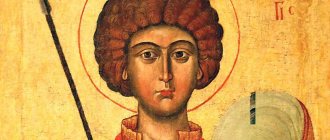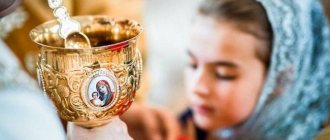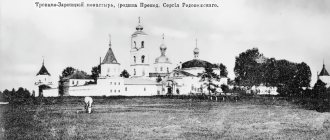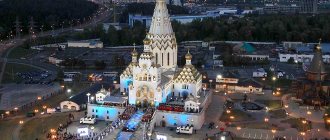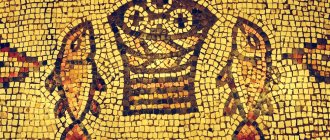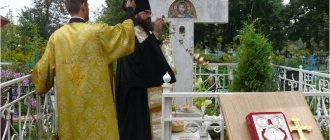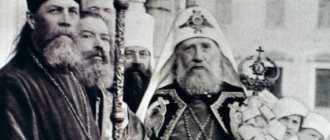Victory Park on Poklonnaya Hill keeps many mysteries related not only to the history of its creation. mos.ru readers already know about the underground labyrinth built to serve the Years of War fountain complex. But this is not the only secret of Poklonnaya Gora: inside the main monument of the park - the Victory Monument - there is also a lot of interesting things.
Although Victory Park was created in memory of the victory of the Soviet people in the Great Patriotic War, these places also preserve the memory of other exploits. For example, the monument “Defenders of the Russian Land”, installed in the northwestern part of the park, represents the figures of three warriors: an ancient Russian hero, a guardsman who took part in the war of 1812, and a Soviet soldier.
However, the architectural dominant and heart of Poklonnaya Gora is undoubtedly the Victory Monument. This is the tallest monument in Russia, its height is 141.8 meters: every ten centimeters of the obelisk is one day of the Great Patriotic War.
Who is St. George the Victorious?
George is not a fictional character; he lived in the 3rd century BC, in the Asia Minor city of Beirut. He was a subject of Emperor Diocletian and became famous as a brave warrior. For his courage and exploits he was given the nickname Victorious.
But George received centuries-old fame for his loyalty to Christianity. During the persecution of Christians, he was forced to renounce his faith, however, the warrior openly declared himself a follower of Christ, for which he was beheaded, and later canonized.
Youth club
There is also a youth club at the temple. It's called "Akaluf". Over a cup of tea, current issues of modern life are discussed here, lectures and discussions are organized.
Thematic classes on theological disciplines and pilgrimages to holy places are held. Meetings with the clergy are not excluded.
Club members meet every week on Fridays. Its participants go to cinemas, church-wide events, seminars and classes.
Priest Dionisy Lukin is responsible for working with youth.
Monument to St. George the Victorious in Moscow on Poklonnaya Hill
The statue of St. George the Victorious is located in front of the obelisk dedicated to the 1418 days and nights of the Great Patriotic War. As on the coat of arms, and on the other four Moscow monuments, St. George is depicted riding a horse, rearing while a warrior kills a snake with a spear. The idea for the composition was taken from the plot of one of the legends, which talks about the saint’s salvation of the inhabitants of the Lebanese mountains and the king’s daughter from a cannibal snake.
Its opening was timed to coincide with the 50th anniversary of the victory over fascism - May 9, 1995.
Monument to St. George the Victorious
Sculptor: S. A. Shcherbakov; Materials: bronze, granite; Year of installation: 2011
The image of St. George the Victorious on horseback, symbolizing victory over the devil, was included in the ancient coat of arms of the city of Moscow. The fountain-monument is a granite pool, in the center of which is a monumental sculpture of St. George the Victorious slaying a serpent. On four sides it is decorated with small multi-tiered fountains that shoot vertically upward. Around the fountain there are slabs with the names of all Moscow stations and cities - points of arrival.
Monument "St. George the Victorious", Moscow - description, history and interesting facts
St. George the Victorious is a revered saint in Christianity. His images have been found on coins and seals since the 4th century; in Rus', already in the 11th century, churches and monasteries consecrated in his honor began to appear. He is depicted on the coat of arms of Moscow and the Russian Federation. A huge number of monuments to St. George the Victorious have been erected on the territory of Russia. They will be discussed in the article.
Sunday School
The Sunday school plays an important role at the church. Several hundred children attend it. Classes are held on Sundays, immediately after the end of the weekly liturgy. The teachers are priests with pedagogical, theological or musical education.
After all, the list of subjects covered in Sunday school is different. This is the law of God, the catechism, the Holy Scriptures, church singing, arts and crafts, the Church Slavonic language. Sunday school students regularly go on pilgrimages to holy places.
Also, Orthodox holidays are always celebrated with her. Children perform theatrical performances.
Life story of St. George
St. George the Victorious is a particularly revered saint in the Christian religion. The most famous legend about him is “The Miracle of the Serpent.” There are many versions and variants of his life, but the most common are Greek and Latin.
According to Greek legend, he was born in the 3rd century, into a fairly wealthy family. At a young age he entered military service. Soon, thanks to his intelligence, courage and physical fitness, he became a military commander and the emperor's favorite. After the death of his mother, he received a huge inheritance. But when the persecution of Christians began, he distributed all his property to the poor and declared himself a believing Christian before the emperor. He was arrested and tortured. He bravely endured all the torment and did not renounce his faith. The angry emperor ordered George to be executed. He was later canonized.
The saint became very popular back in the days of early Christianity. Thus, in the Roman Empire, already in the 4th century, temples named after him began to appear. He is considered the patron of valiant warriors and farmers. In Rus', St. George's Day (St. George's Day) was celebrated - April 23 and November 26; monasteries were founded in Novgorod and Kyiv in the 11th century. Images of the Saint began to be depicted on coins and seals.
Since the time of Dmitry Donskoy, he has become the patron saint of Moscow. The name of the founder of the capital, Dolgoruky Yuri, is associated with the name of the saint. Yuri, Yegori, Gury, Rurik - all these are variants of the name Georgy. Currently, St. George the Victorious is depicted on the coat of arms of the city of Moscow and the coat of arms of the Russian Federation.
The St. George Cross and the Order of St. George have been restored in Russia. The symbol of Victory Day has been the St. George Ribbon for many years.
A huge number of monuments to St. George the Victorious have been erected in Russia.
Description of the monuments to St. George the Victorious in Moscow
The Holy Great Martyr George the Victorious is the patron saint of the capital and is depicted on the coat of arms of Moscow. There are 5 monuments to him in the city:
- The first monument was erected in the very center of the capital - on Manezhnaya Square. In 1997, the construction of the Okhotny Ryad shopping complex was completed, on the surface of the dome of which a monument to St. George the Victorious was erected. A fountain complex has been built around it. The sculpture is the creation of Tsereteli Zurab. She depicts St. George the Victorious, who slays the serpent.
- The second monument was installed on Poklonnaya Hill near the Victory Obelisk. Its opening was timed to coincide with the 50th anniversary of the Great Victory. The author of the sculpture is Tsereteli Zurab. The sculptural composition depicts the figure of a saint who is trying to cut a snake with his spear. The monument symbolizes the struggle between good and evil.
- The third monument to St. George the Victorious in Moscow was installed in the courtyard of the Grekov Studio of Military Artists. Author – Taratynov Alexander. The sculptural composition depicts the figure of a very young St. George the Victorious, who, sitting on a horse, strikes an evil serpent with a spear.
- The fourth monument was erected on Komsomolskaya Square in 2012, between the Yaroslavsky and Leningradsky railway stations. This is, in essence, a monument-fountain, which is a pool made of granite, in the center of which is a sculpture of a saint. The author of the work is Sergey Shcherbakov. The sculpture of George is decorated on four sides with fountains that shoot vertically upward. Plates with the names of all Moscow train stations and destination cities are laid out around the fountain.
- The fifth monument to St. George the Victorious in Moscow, the least known, is located in the Kremlin. It is installed on the Small Dome of the Senate Palace. A monument with a very interesting history and fate.
In 1995, sculptors recreated a previously lost sculpture of a saint slaying a dragon. Its weight is about 2 tons, it is cast from bronze. This is a copy of the ancient creation of the sculptor Kazakov, whose work was lost to Russia forever. This is a tragic story.
In 1787, Catherine the Great celebrated her 25th reign. The construction of the Senate building in Moscow was completed by this solemn date. Its dome was crowned with a statue of St. George the Victorious. The monument weighed about 6 tons, was cast from zinc and covered with gold. Every year on May 6, on the day of remembrance of the saint, a laurel wreath was laid on his head.
During the capture of Moscow by Napoleon's troops in 1812, the statue was removed, sawn apart and sent to France. So the original sculpture was lost to the state forever.
NORTH OSSETIA: ATTRACTIONS EVERYWHERE
Uastirdzhi on the rock
– a symbol of the region, its history and pride.
The sights of Ossetia will be incomplete without this dynamic monument that greets travelers and amazes them with its unchanging grandeur. Where can you admire the epic sculptural group emerging from the depths of an ancient mountain? To see Uastirdzhi, the Alagir Gorge
is the first landmark for the traveler, because it is on its threshold that there is an unusual monument. The path from Vladikavkaz lies through the settlements of Dzuarikau, Khataldon, Alagir and Buron. The route takes about an hour. Horseman Uastirdzhi is a monument that you must see with your own eyes to appreciate its indescribable grandeur and beauty.
North Ossetia. Alagir Gorge. Monument to Uastirdzhi on the map
Coordinates: 42.9590431, 44.2118061
Monument to St. George the Victorious from the rock
In Vladikavkaz there is a unique monument located at an altitude of more than 20 meters and attached to the rock with part of the saint’s cloak. The weight of the monument is about 28 tons, its height is 6 meters. The monument is called “St. George the Victorious, who jumps out of the rock.” Visually, it seems to be floating in the air. The author of the sculpture is Nikolai Khodov.
Saint George is depicted proudly looking into the distance, he has no doubt that he will win. The sculpture is depicted in dynamics, the cloak flutters in the wind. The monument is made of bronze and covered with silver paint.
Local residents have a belief that if you make a wish while under the monument, it will definitely come true.
St. George the Victorious is a revered saint in North Ossetia. He is considered the patron saint of men, warriors, and travelers. In Ossetia it is called Uastirdzhi.
Local residents in the epic have a hero who is the winner and patron of warriors; during the Christianization of the territory, his name began to be associated with the name of St. George the Victorious, and this association took root.
RECENTS OF SAINT UASTYRDZHI: WHERE IS THE SHINCED?
Uastirdzhi, a monument in Ossetia, not only attracts a huge number of tourists, but also managed to cause a little embarrassment. The fact is that recently relics were brought to this beautiful mountainous region, which Orthodox Christians hastened to christen the remains of Uastirdzhi. St. George, whose relics were actually brought to Ossetia, has long been identified with the hero of the Nart epic, and it is because of this that the confusion arose. But there is a fundamental difference between Uastirdzhi and St. George. The first saint is a prototype of a warlike deity,
appeared back in the Alan era, and the second is a real person, a Roman commander, later elevated to the rank of saint. Therefore, in fact, these saints do not have as much in common as is commonly said.
Monuments in Russia and in the world
Monuments to St. George the Victorious are installed in many cities of Russia: Ivanovo, Krasnodar, Nizhny Novgorod, Ryazan, Sevastopol, Yakutsk and many other cities.
St. George the Victorious is revered in Georgia, Turkey, Greece, Germany, and France.
The coat of arms of Georgia depicts a shield with St. George the Victorious slaying a serpent. The Cross of St. George (a red straight cross on a white background) is featured on the flags of Georgia, Great Britain and the coat of arms of Milan.
Abroad, the monument to St. George was erected in Melbourne (Australia), Sofia (Bulgaria), Bobruisk (Belarus), Berlin (Germany), Tbilisi (Georgia), New York (USA), Donetsk and Lvov (Ukraine) ), in Zagreb (Croatia), in Stockholm (Sweden).
